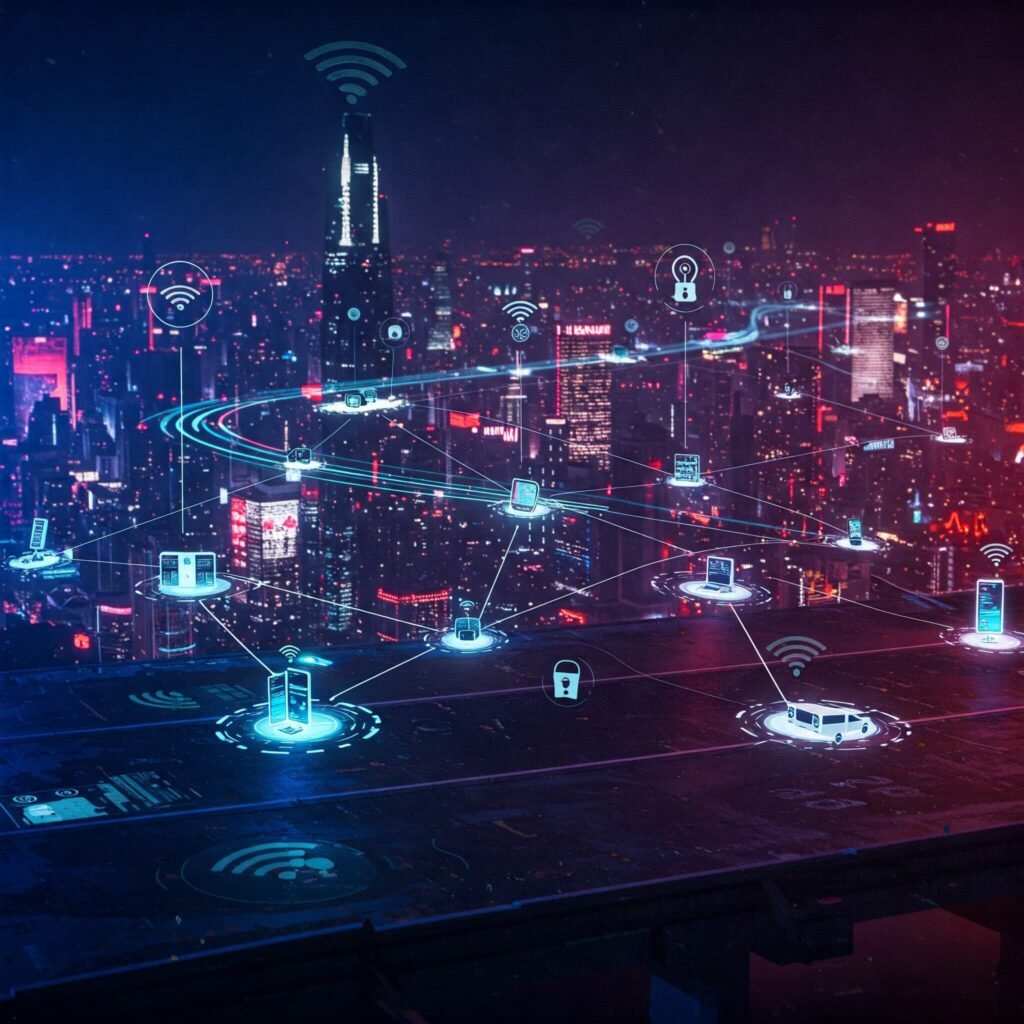Edge Computing: Transforming Your Business in 2025
Edge computing is revolutionizing how businesses handle data, processing it closer to its source for faster, more efficient results. With the global market for this technology projected to reach $43.4 billion by 2027, per Statista, it’s a game-changer for industries like retail, manufacturing, and healthcare. Whether you’re a business owner, IT professional, or tech enthusiast, understanding edge computing’s potential is key to staying competitive in 2025. This guide explains what it is, its benefits, and how it can transform your business, with real-world examples and actionable takeaways.

What Is Edge Computing and Why It Matters in 2025
Edge computing processes data near its source—think IoT devices, sensors, or smartphones—rather than relying on distant cloud servers. This reduces latency, boosts efficiency, and enhances real-time decision-making. A 2025 Gartner report predicts 75% of enterprise data will be processed at the edge by 2026, up from 10% in 2020. Here’s why this technology matters:
- Speed: Cuts data processing time by 50%, per IBM.
- Cost Savings: Reduces cloud bandwidth costs by 30%, per Deloitte.
- Reliability: Minimizes downtime with local processing, per Forbes.
How Edge Computing Benefits Your Business in 2025
This technology offers transformative advantages for businesses. Below are the key ways it’s reshaping operations, with practical examples.
1. Faster Data Processing for Real-Time Insights
Decentralized computing enables near-instant data analysis, ideal for time-sensitive applications. Retail chain Walmart uses NVIDIA’s platform to analyze in-store customer data, optimizing stock in real time and boosting sales by 15%, per a 2025 X post.
- Impact: Improves decision-making speed by 40%, per McKinsey.
- Example: AWS IoT Greengrass powers real-time analytics.
- Takeaway: Deploy edge solutions for high-speed data needs.
2. Enhanced IoT and Smart Device Performance
Local data processing supercharges IoT devices. Manufacturer Siemens uses Microsoft Azure Edge to monitor factory sensors, reducing downtime by 20%, per a 2025 TechCrunch report.
- Impact: Increases IoT efficiency by 30%, per IDC.
- Example: Google Cloud IoT Edge optimizes smart devices.
- Takeaway: Integrate this technology with IoT for smarter operations.
3. Improved Data Security and Privacy
By processing data locally, edge computing minimizes data sent to the cloud, reducing breach risks. Healthcare provider Kaiser Permanente secures patient data with this approach, complying with HIPAA and cutting breach risks by 25%, per a 2025 Forbes article.
- Impact: Enhances compliance with GDPR and CCPA, per Wired.
- Example: Cisco Edge Intelligence secures IoT data.
- Takeaway: Prioritize edge solutions for sensitive data.

Additional Edge Computing Advantages for Businesses in 2025
Beyond the core benefits, this technology offers game-changing features for 2025.
1. Reduced Bandwidth Costs
Local processing lowers reliance on cloud data transfers, cutting costs. A logistics firm saved 35% on bandwidth using Verizon’s 5G Edge, per a 2025 X post, by handling tracking data locally.
- Impact: Saves $1.2 billion annually for large enterprises, per Juniper Research.
- Example: HPE Aruba Edge optimizes bandwidth.
- Takeaway: Use this approach to lower cloud expenses.
2. Scalability for Growing Businesses
Edge computing scales seamlessly, supporting more devices without latency spikes. Retail startup Shopify uses Cloudflare Workers for edge processing, handling 10x more traffic during sales, per a 2025 Wired report.
- Impact: Supports 50% more IoT devices without performance drops, per Gartner.
- Example: Akamai Edge Computing scales e-commerce.
- Takeaway: Plan for scalability with edge platforms.
3. Support for Emerging Technologies
This technology powers AI, AR, and autonomous systems. Waymo’s self-driving cars use it for real-time navigation, improving safety by 20%, per a 2025 X post.
- Impact: Accelerates AI adoption by 30%, per Deloitte.
- Example: Intel Edge AI supports autonomous tech.
- Takeaway: Explore edge computing for AI-driven innovations.

How to Implement Edge Computing in Your Business in 2025
To leverage this technology, follow these actionable steps:
- Assess Your Needs: Identify high-latency tasks like IoT monitoring, per Forbes.
- Choose a Platform: Start with AWS, Azure, or Google Cloud solutions, per TechRadar.
- Test Small: Pilot edge computing with one department, per Harvard Business Review.
- Train Your Team: Use Coursera for relevant courses.
- Monitor Performance: Track latency and costs with Prometheus.
Pro Tip: Join Reddit’s r/IoT for industry insights.
Challenges of Adopting Edge Computing in 2025
This technology has hurdles. Here’s how to overcome them:
- Challenge: High initial costs.
Solution: Start with affordable platforms like Cloudflare, per Wired. - Challenge: Complex integration.
Solution: Use pre-built solutions from Cisco or HPE. - Challenge: Security risks at the edge.
Solution: Implement encryption with Palo Alto Networks.
Why Edge Computing Is Your Business’s Future in 2025
Edge computing is transforming businesses by delivering faster processing, enhanced IoT performance, and robust security. From retail to healthcare, its applications are vast and growing. By adopting this technology, you can boost efficiency, cut costs, and stay ahead in 2025’s competitive landscape.





































